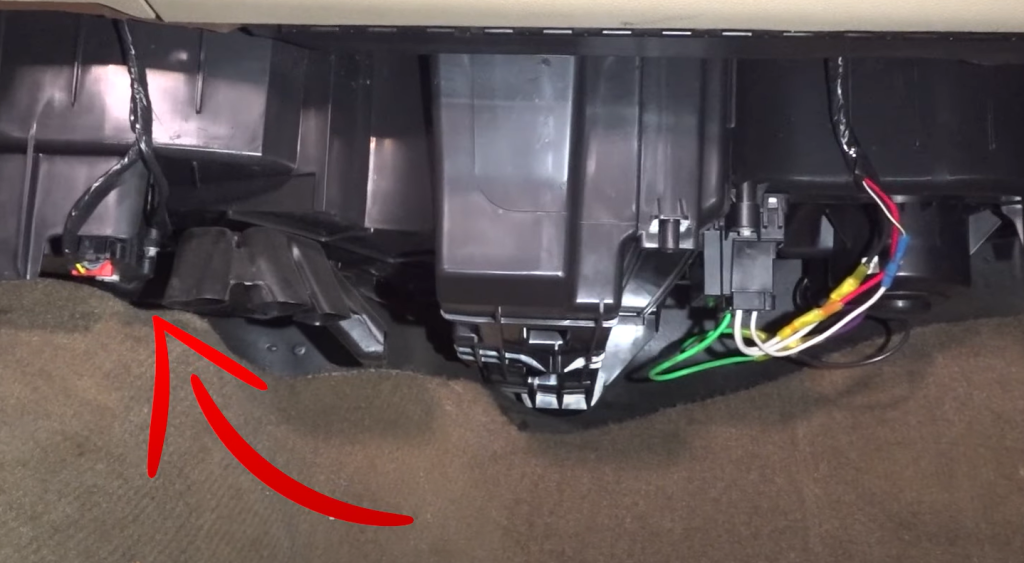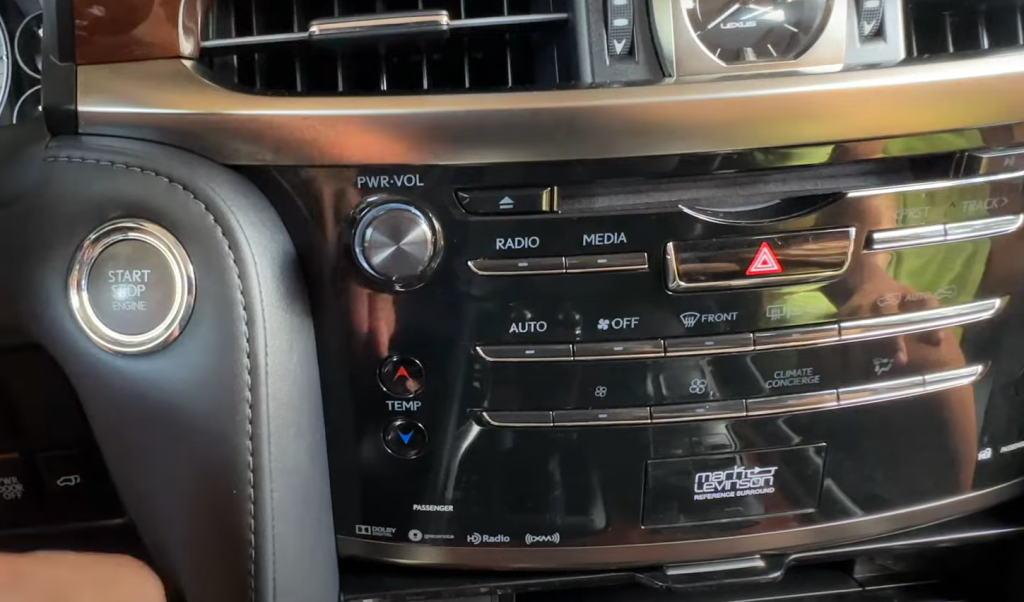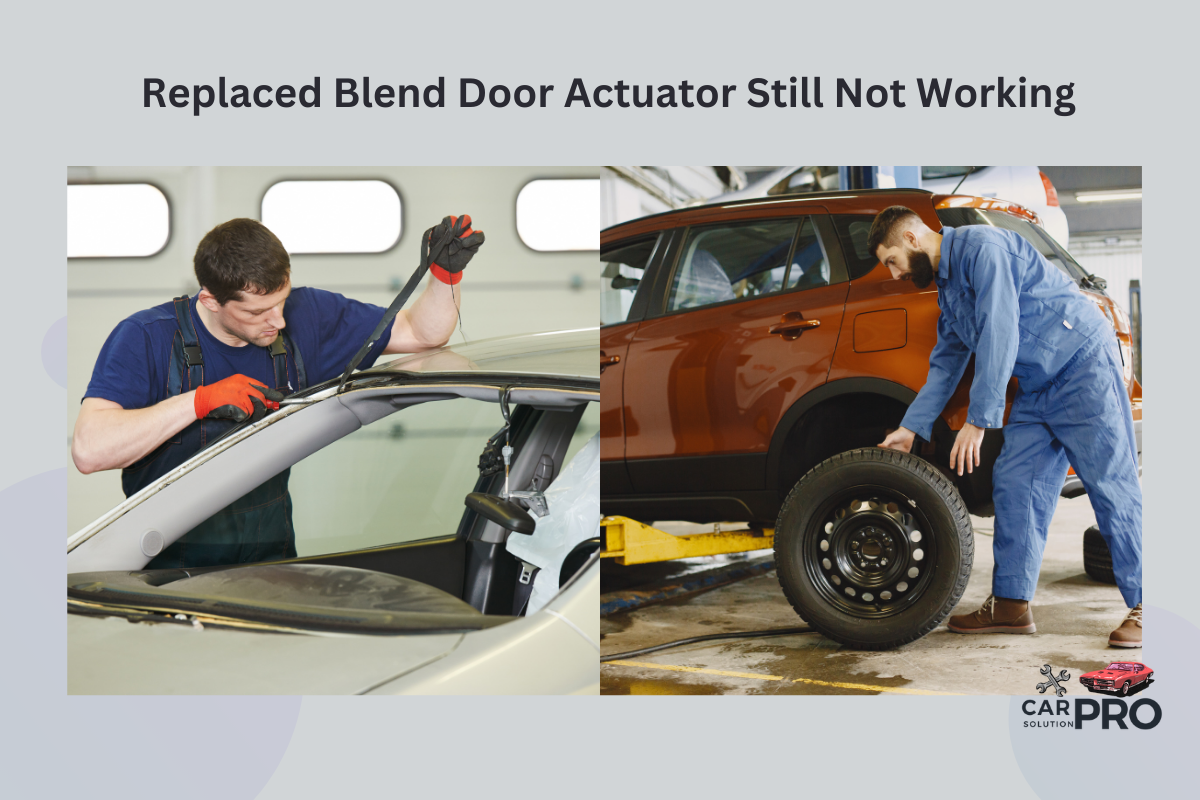Replacing a blend door actuator can be frustrating when it doesn’t fix the problem. Many car owners face this issue after installing a new actuator. If your replaced blend door actuator still doesn’t work, the problem may lie in the wiring, control module, or blend door itself.
There are several reasons why a new actuator might not function properly. Loose wires at the wiring harness can prevent power from reaching the actuator. In some cases, the control module may need recalibration or replacement. It’s also possible that the blend door is physically stuck or damaged.
Fixing this issue often requires a step-by-step approach. This includes checking connections, testing power supply, and inspecting the blend door mechanism. In some cases, professional diagnostic tools may be needed to pinpoint the exact cause of the malfunction.
Key Takeaways
- New blend door actuators may not work due to wiring issues or control module problems
- Proper diagnosis involves checking connections and testing the power supply
- Professional assistance might be necessary for complex HVAC system issues
Understanding Blend Door Actuators
Blend door actuators play a crucial role in vehicle climate control systems. These small motors control the flow of air and help regulate temperature inside a car.
Function of a Blend Door Actuator
A blend door actuator controls the position of flaps or doors in the HVAC system. It directs air flow between hot and cold sources. When you adjust the temperature in your car, the actuator moves to mix warm and cool air.
The actuator responds to signals from the climate control module. It can open, close, or partially adjust the blend doors. This allows for precise temperature control in different areas of the vehicle.
Proper functioning actuators ensure consistent airflow and temperature. They help maintain comfort for drivers and passengers in various weather conditions.
Common Symptoms of a Faulty Actuator
When a blend door actuator fails, it can cause noticeable issues with the car’s climate control system. One common sign is inconsistent temperature or airflow from the vents.
Drivers may hear clicking or knocking sounds from the dashboard. This often occurs when starting the car or adjusting temperature settings. The noise comes from the actuator trying to move but failing.
Another symptom is the inability to change air temperature. The system may blow only hot or only cold air, regardless of settings. In some cases, air may only come from certain vents.
Faulty actuators can also cause rapid temperature fluctuations. The climate control may switch between hot and cold without user input.
Diagnostic Procedures
When a replaced blend door actuator still doesn’t work, proper diagnosis is key. Systematic checks and electrical tests can pinpoint the issue and guide repairs.
Initial System Check
Start by visually inspecting the new actuator and surrounding components. Look for loose wires, damaged connectors, or visible signs of wear. Ensure the actuator is securely mounted and aligned correctly with the blend door.
Check fuses related to the HVAC system. A blown fuse can prevent the actuator from receiving power.
Verify that the blend door moves freely by manually operating it. Stuck or binding doors can strain the actuator motor.
Listen for unusual noises when adjusting temperature controls. Clicking or grinding sounds may indicate mechanical issues.
Electrical Tests for Actuator Function

Use a multimeter to test for proper voltage at the actuator connector. The reading should match the vehicle’s specifications when the ignition is on.
Check for continuity in the wiring between the actuator and control module. Damaged wires can interrupt signals.
Scan for diagnostic trouble codes using a compatible scanner. Some vehicles store codes specific to blend door actuator issues.
Test the actuator’s resistance with an ohmmeter. Compare readings to manufacturer specs to identify internal motor problems.
Activate the actuator using a scan tool command. This bypasses the control module and can reveal if the issue lies with the actuator itself or the vehicle’s HVAC controls.
Troubleshooting Post-Replacement Issues
When a replaced blend door actuator doesn’t work, it’s crucial to check a few key areas. These include proper installation, system calibration, and potential blockages in the ducts.
Verifying Actuator Installation
First, check if the new actuator is installed correctly. Make sure it’s securely fastened and all electrical connections are tight.
Look for any loose wires or disconnected plugs. A visual inspection can reveal obvious issues.
Test the actuator manually. Gently move it to see if it’s properly aligned with the blend door. If there’s resistance or it doesn’t move freely, it may be incorrectly positioned.
Double-check the part number to ensure it’s the right actuator for your vehicle model. Using an incompatible part can lead to functionality problems.
Examining the HVAC Calibration
After installation, the HVAC system often needs to recalibrate. This process allows the control module to recognize the new actuator.
To initiate calibration:
- Remove the HVAC fuse for at least 10 seconds
- Replace the fuse
- Start the vehicle
- Wait 40 seconds for self-calibration
During calibration, avoid adjusting any climate controls. Interference can disrupt the process and cause the actuator to malfunction.
If calibration fails, there may be an issue with the control module itself. In this case, professional diagnostic tools might be necessary.
Investigating Duct Obstructions
Sometimes, the problem isn’t the actuator but a blockage in the air ducts. This can prevent proper airflow even with a functioning actuator.
Check for debris or foreign objects in the vents. Use a flashlight to peer into accessible areas of the ducting.
Listen for unusual noises when adjusting temperature settings. Rattling or scratching sounds may indicate an obstruction.
If possible, remove the dashboard panels to inspect the ducts more thoroughly. Look for any collapsed or kinked sections that could impede airflow.
In some cases, small animals may nest in the ducts, causing blockages. Professional cleaning might be necessary if severe obstructions are found.
Advanced Solutions
When a replaced blend door actuator still doesn’t work, some advanced fixes can help. These methods require more technical skill but can often solve stubborn issues.
Climate Control System Reset

A system reset can fix electronic glitches causing actuator problems. To reset, disconnect the car battery for 15 minutes. This clears the system’s memory.
After reconnecting, turn on the ignition without starting the engine. Set the climate control to its highest heat setting for 30 seconds. Then switch to the coldest setting for another 30 seconds.
Start the engine and test all climate control functions. This process recalibrates the HVAC system, potentially fixing actuator issues.
Wiring and Connector Inspections
Wiring problems can prevent a new actuator from working properly. Check for loose connections at the wiring harness. Ensure all plugs are fully seated and locked in place.
Look for signs of corrosion or damage on connectors and wires. Clean any corroded terminals with electrical contact cleaner. Replace any damaged wires or connectors.
Test continuity in the wiring using a multimeter. This can reveal hidden breaks in the wires. Pay special attention to areas where wires might rub or bend sharply.
Professional Assistance and Services
Sometimes, a blend door actuator problem requires expert help. Professional technicians have the tools and know-how to diagnose and fix complex issues.
When to Consult a Technician
If you’ve replaced the blend door actuator and it’s still not working, it’s time to call a pro. DIY fixes can only go so far. A technician can check for hidden problems like loose wire connections or a faulty HVAC control module.
They have special tools to test the electrical system and pinpoint the exact cause. Some issues, like improper calibration, need expert handling. A pro can also check if other parts of your HVAC system are affected.
Don’t wait if you notice your car’s AC or heat not working right. Quick action can prevent bigger, costlier problems down the road.
Choosing a Qualified HVAC Specialist
Pick a specialist with experience in car HVAC systems. Look for certified mechanics who stay up-to-date with the latest car models and tech. Ask about their experience with your specific car make and model.
A good specialist will explain the problem clearly and offer a detailed fix plan. They should use quality parts and give a warranty on their work. Check online reviews and ask for references.
Some shops specialize in HVAC repairs. These may be a better choice than general auto repair shops for tricky blend door issues. A skilled technician can save you time and money in the long run by fixing the problem right the first time.
Frequently Asked Questions
Replacing a blend door actuator can sometimes lead to unexpected issues. These questions address common problems and solutions after installation.
How do you reset a new blend door actuator after installation?
To reset a new blend door actuator, disconnect the car battery for about 15 minutes. Reconnect the battery and start the engine. Let it run for a few minutes to allow the system to recalibrate.
Why does my vehicle still have no AC after replacing the blend door actuator?
If there’s no AC after replacing the actuator, check the electrical connections. Ensure all wires are properly connected. The problem might also be with the AC compressor or low refrigerant levels.
What could be causing a blend door actuator to click after being replaced?
Clicking after replacement often indicates a wiring issue or improper installation. Check that the actuator is securely mounted and all connections are tight. The clicking may also suggest a faulty control module.
Does a blend door actuator need calibration upon replacement?
Most modern vehicles automatically calibrate the blend door actuator. However, some may require a manual reset procedure. Consult the vehicle’s manual for specific calibration instructions.
How can I manually adjust a blend door actuator if it’s not functioning correctly?
Locate the actuator behind the dashboard. Remove it and turn the gear mechanism by hand to adjust the blend door position. This is a temporary fix and should be followed by proper repair.
Is there a specific fuse associated with the blend door actuator, and how can it affect operation?
Many vehicles have a dedicated fuse for the HVAC system, including the blend door actuator. A blown fuse can prevent the actuator from receiving power. Check the fuse box and replace any blown fuses related to the climate control system.


